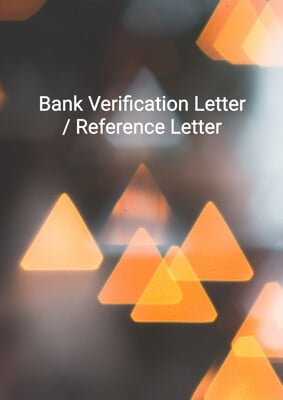
Authorisation Letter to Financial Institution
Margin Client for Stock Borrowing
This document is an Authorisation / Request given by margin account client for securities borrowing / lending / margin lending purposes. The Account opened allows for deposits such as securities as collateral for loans or advances made to the authorised by a financial institution; to borrow or lend such securities without notice.
How to Tailor the Document for Your Need?
01
Create Document
Click "Create Document" button and the document will be prepared with your account details automatically filled in.
02
Fill Information
Please fill in any additional information by following the step-by-step guide on the left hand side of the preview document and click the "Next" button.
03
Get Document
When you are done, click the "Get Document" button and you can download the document in Word or PDF format.
04
Review Document
Please review the document carefully and make any final modifications to ensure that the details are correct before sending to the addressee.
Document Preview
Document Description
The 'Authorisation Letter to Financial Institution' is a document that grants permission to a financial institution to borrow or lend securities on behalf of the account holder. The document begins with a formal salutation and is addressed to the account job company. It is dated with the current date.
The purpose of the letter is to authorize the financial institution to use the securities held in the account as collateral for loans or advances. This authorization is valid for a specified period of time, usually mentioned as 'period months' from the date of the letter.
The letter specifies two main actions that the financial institution is authorized to take with the securities. Firstly, it allows the institution to deposit the securities as collateral for loans or advances received from another financial institution. Secondly, it permits the borrowing or lending of the securities for the purpose of fulfilling settlement obligations between exchange members.
It is important to note that the borrowing and lending of securities should be in accordance with exchange regulations. The letter also mentions that any consideration payable for these transactions will be determined separately through a treaty.
The financial institution remains responsible for the securities borrowed, loaned, or deposited under this authorization. However, it is mentioned that these securities may be subject to liens of third parties, and the return of the securities to the account holder may be subject to the satisfaction of such liens.
The letter concludes with a formal closing and space for the client's signature(s) and name.
How to use this document?
1. Address the letter: Begin the letter by addressing it to the account job company, including their name and address.
2. Specify the date: Mention the current date in the letter.
3. Introduce the purpose: Clearly state that the letter is an authorization for securities borrowing and lending under a margin account.
4. Identify the account: Mention the name of the account opened under the company's name.
5. Grant authorization: Clearly state that the account holder authorizes and requests the financial institution to borrow or lend securities on their behalf.
6. Specify the actions: Mention that the authorized actions include depositing securities as collateral for loans or advances and borrowing or lending securities for settlement obligations.
7. Compliance with regulations: Emphasize that all borrowing and lending activities should be in accordance with exchange regulations.
8. Separate consideration: State that the consideration payable for these transactions will be determined separately through a treaty.
9. Responsibility and liens: Clarify that the financial institution remains responsible for the securities, but their return may be subject to the satisfaction of third-party liens.
10. Close the letter: Conclude the letter with a formal closing and provide space for the client's signature(s) and name.
Not the right document?
Don’t worry, we have thousands of documents for you to choose from:



































